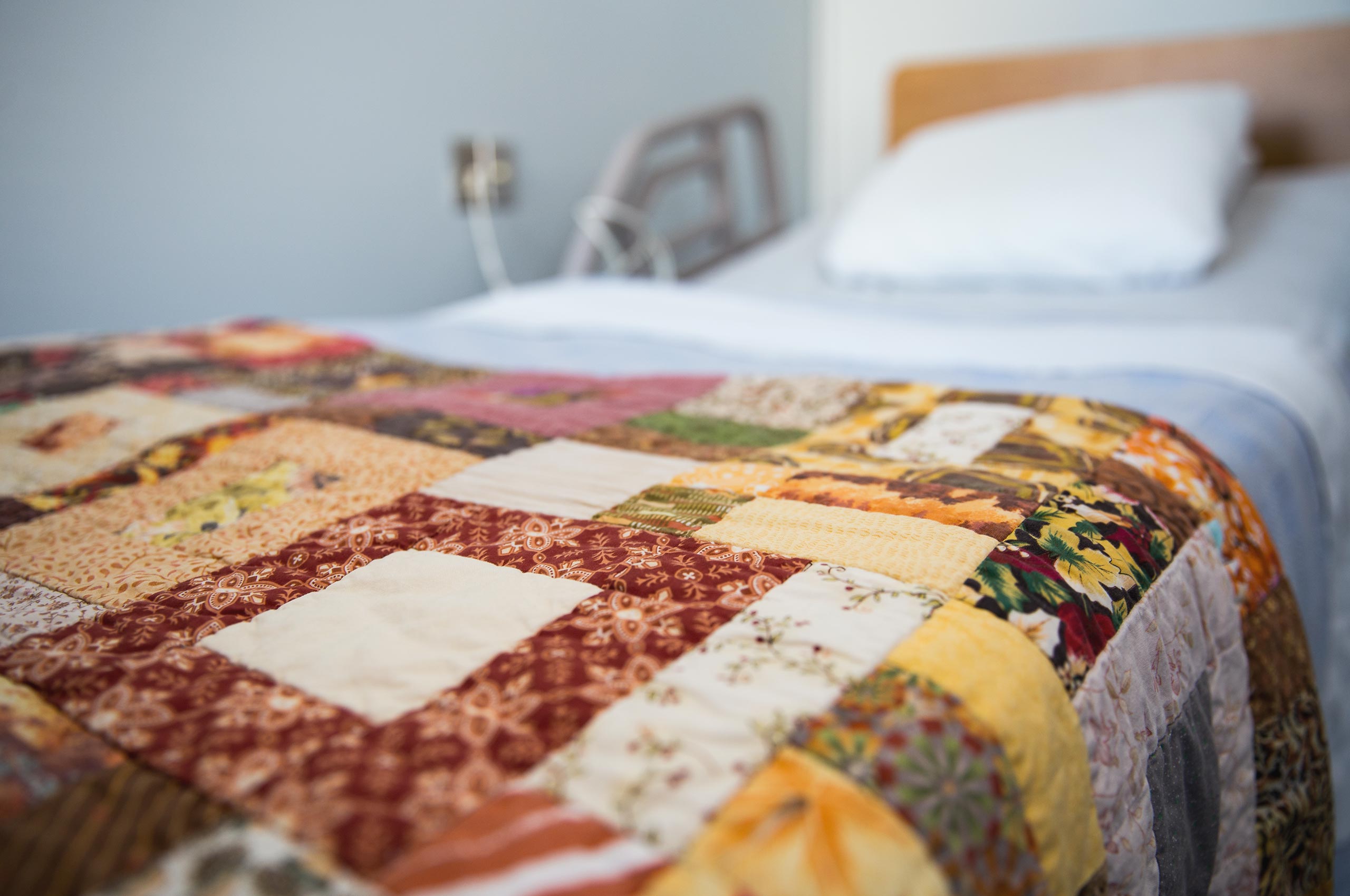Death will certainly touch us all. But our final encounter with this last act of our existence—our own dying—is often influenced by our social circumstances. Most of us envision the ideal death where we are surrounded by loved ones in the comfort of our homes, or cared for by health care professionals in clean, white rooms. “[We] want to have ‘beautiful everything’—it’s very designer,” says Dr Susan Burgess, a medical doctor who has provided palliative care to many of her dying patients in the Downtown Eastside (DTES).
For some in the DTES you could say death is all too present. This is where marginalized residents are dying at eight times the national average rate, according to a 2015 University of British Columbia (UBC) study. In 2012, a Journal of Urban Health study about the DTES vulnerable population found that the causes of higher mortality are complex, but include “high rates of HIV-AIDS, hepatitis C, and illicit substance use among precariously housed, mentally ill, and homeless individuals.”
Another factor that contributes to DTES vulnerable populations being more susceptible to poor health outcomes is their lack of trust in health service providers. “Providing services for patients in the DTES can be challenging as many of them suffer from past trauma and abuse, while many more continue to face ongoing suffering,” writes Dr Steven Yau, a DTES family physician, in a 2016 issue of UBC Medical Journal. “Trust in physicians can be difficult to gain, with [irregular] care and sometimes… violent patient behaviours.”
With the complex health, housing, and trust challenges faced by the DTES marginalized population, providing access to dignified end-of-life care becomes important. So, what is end-of-life care and hospice palliative care? How well do these services meet the high-demand, complex needs of the DTES vulnerable population?
Palliative Care Models
End-of-life care and (hospice) palliative care are relatively recent concepts, notes Dr Robert Fowler, a clinician scientist at the University of Toronto, in his 2013 article “End-of-Life Care in Canada,” published in the journal Clinical Investigative Medicine. He cites the Canadian Institute for Health Information, which defines end-of-life care as “care for people in decline who are deemed to be terminal or dying in the foreseeable (near) future.”
Hospice palliative care, according to the Canadian Hospice Palliative Care Association (CHPCA), “is aimed at relieving suffering and improving the quality of life for persons who are living with, or dying from, advanced illness or are bereaved.” The CHPCA goes on to define palliative care as a “special kind of health care for individuals and families who are living with a life-limiting illness that is usually at an advanced stage.”
In Canada, palliative care services are provided either in the home, hospital, or hospice facility. Most people want to be in the comfort and familiarity of their own home for as long as possible. If they become ill, they will go to hospital for treatment. After treatment, they may return home, stay in hospital care, or move on to hospice care. Hospice care is usually for the last few months of life.
Canadians are fortunate to have publicly funded hospice palliative care services. However, accessing those services is not always equitable. A 2012 study in BMC Palliative Care on the end-of-life care system for the homeless population reports, “We kind of rightly or wrongly think palliative care and hospices are for [all of us].… We are assuming the poor will automatically get in but, because there is often a cost component, sometimes [they] are left to die on the streets.”
According to a 2012 Canadian study published in the Palliative and Supportive Care journal, additional barriers to end-of-life care for vulnerable populations may include “homeless people and people with persistent mental illness.”
Hospice palliative care delivered at home is available to the DTES vulnerable population only if they have a residence, such as a single-occupancy room in a residential building. Hospitals are also an option but may not always be a good fit for the DTES vulnerable population. According to the 2012 BMC Palliative Care article, hospitals have operational policies that prohibit illicit drug use by patients while in care. This means that drug addicted vulnerable people are often turned away from accessing treatment. So, who can the DTES vulnerable population turn to for help?
DTES Advocates
Dr Burgess is a medical doctor with almost 30 years of service to the DTES vulnerable population. She is well acquainted with their health needs, including access to end-of-life care. When she arrived in the early 1990s, Dr Burgess says the Downtown Community Health Centre (DCHC) was the only free-standing clinic in the area. She currently works at the DCHC, though at that time the DCHC mostly cared for the elderly and was only open during regular business hours. But many of the DTES vulnerable people were not living business hour lives, says Dr Burgess.

Dr Burgess recalls a sudden and rapid rise in mental health cases among DTES residents during the 1990s. The mental health issue in the DTES arose after the deinstitutionalization of patients in psychiatric hospitals. She says that former patients would often end up in the DTES where they would become introduced to injection drug use and in three months would become infected with HIV. Because of the rapid increase in people becoming sick, Dr Burgess said that more outreach services had to be developed because mainstream emergency departments were being overwhelmed.
Despite the high mortality rate in the 1990s, Dr Burgess says, “I [felt] very privileged that I found this area…. I [was] interested in HIV and palliative care for a very long time.” She was able to start working with the Vancouver Native Health Clinic, which is where she learned how to help the DTES vulnerable population.
To succeed in caring for vulnerable patients with different challenges, Dr Burgess found that care staff needed to build strong relationships and trust with patients who normally could not ask for help or easily accept it. She says, “People were too sick to come to a clinic…. It could also take months to get someone to open their door [to us], but we would get there.”
Trust was often built by home care nurses, sometimes referred to as street nurses, who could make a difference in delivering life saving care. Bonnie Fournier was a street nurse who worked at the Vancouver pretrial cells during the late 1990s. In a 2013 interview on CBC Radio’s The Early Edition, shortly after Fournier’s passing, a colleague remembered her as “a fearless advocate for marginalized women…. She had the ability to make them feel important, equal, and certainly worthy of medical care.” The work of advocates like Fournier had a positive effect on the health of many vulnerable people in the DTES.
An early advocate, May Gutteridge, founded the St James Community Service Society in the DTES in 1961. In 1990, the Society established Western Canada’s first hospice, which would later be named May’s Place.
May’s Place opened at a critical time when the HIV-AIDS epidemic ravaged the DTES. Dr Burgess says, “We had people dying so quickly that May’s Place staff simply told us to bring our people [from the DCHC] in on a gurney.” With only six beds, May’s Place staff would then care for the gravely ill until they died.
The story of one patient stands out. Dr Burgess recalls a young man, an injection drug user with AIDS who was in his room, suffering from septicemia (virulent blood poisoning) with no medications. He had refused hospital care but Dr Burgess and hospice care staff were able to convince him to go to May’s Place. She explains that she has had similar experiences with other patients who had to be convinced to go to May’s Place. Upon arrival, they are welcomed by the fireplace, and then are offered a shower. When she sees the patients later in the day, clean and warm, she says they often tell her, “This is amazing…. This is like heaven.”
The name of every person who has died in the care of May’s Place is remembered in a book. By each name is a memento: a patient’s photo, or their writing, or a driver’s license. Every patient is cherished, remembered, and counted at May’s Place.

May’s Place Today
“May’s Place is not about dying; it’s about [living],” says manager Michelle Sutherland, a remarkable, upbeat social worker who knows the DTES vulnerable population well. She notes that May’s Place cared for 80 vulnerable people in 2016–2017. Sutherland also talked about a harm reduction approach to encourage dying patients to abstain from illicit drug use, if they can, during their last few months of life.
Sutherland spoke about the resilience of some vulnerable people who come to May’s Place. She recalls one man who stayed for a few months after his health rallied. He stopped using illicit drugs. He began writing in a journal, and started talking with a social worker at May’s Place who helped him come to terms with his life’s journey. The patient was able to reconnect with his family, and he died surrounded by people who cared.
In the end, death is the great equalizer and will take each of us, regardless of who we are. Death can be harder on those who are less fortunate, but advocates like Gutteridge, Fournier, and Dr Burgess open our eyes to the end-of-life stories of the vulnerable population. Only then can we become compassionate and begin conversations about equitable access to end-of-life care.
_____
CORRECTION: The print version of this story incorrectly cited the Palliative and Supportive Care Journal. The journal’s title is Palliative and Supportive Care. The correction has been made.











